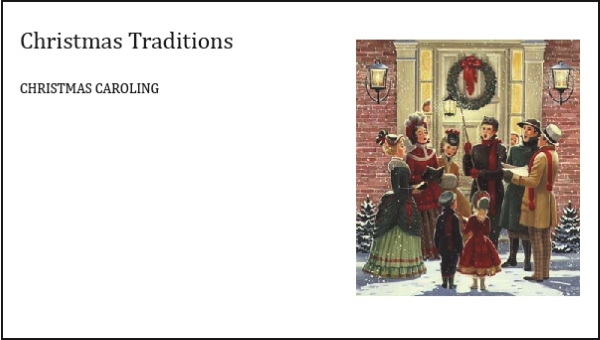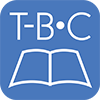By Tyson Thorne

As mentioned yesterday, there appears to be a significant lack of Christmas spirit this season. One of the most time-honored ways of producing that spirit is the Christmas carol, especially when it is combined with the practice of “caroling”.
Sure, to some carols may appear to be “the visiting relatives of the musical world: They show up at the same time every year, stick around a little longer than one might prefer, and set the tone of virtually all family entertainment while they are in town.” (Nathan Heller, Christmas Carols: Why do we Keep Singing Them? Slate magazine). But to other’s they are the embodiment of the Christmas Spirit in song, a psalm for the modern age, a glimpse of the awe, wonder and merriment of the first Christmas when the angels announced the birth of the Messiah to the shepherds. Whatever your opinion you may have wondered just how this tradition got started?
There is very little Christian writing and tradition from the first couple centuries of church history, a fact that has caused some archaeologists to wonder just how wide spread Christian influence was in that time period. Our first historic account of Christmas songs comes from second century Rome where it was decreed that songs about the birth of Christ be sung to celebrate the Savior. The tradition didn’t really gain traction until the fourth century, however, when the church finally settled on celebrating Christmas on December 25. Shortly thereafter a songbook began to emerge, largely in Latin, but the only song that remains from this period is Veni, Redemptor Gentium (Savior of the Nations, Come) by Saint Ambrose of Milan.
It wasn’t until the 13th century that Christmas celebrations were reinvented into something approaching what we enjoy today, and largely due to the influence of one man, Saint Francis of Assisi. Rather than old Latin hymns the people largely lost their understanding of, Francis staged Christmas pageants with real animals and hay and music in the common language. The theater of his approach revitalized Christmas music, and creativity once more began to flourish. Traveling entertainers would sing these new songs in public squares. The Christmas spirit was reborn and would last throughout the ages.
Our first example of door-to-door caroling began in the 1840’s after Prince Albert of Germany wed Victoria of England. After mentioning how much he enjoyed Christmas Carols the people of England started serenading the royal family with them each Christmas. This led to the institution of “Waits”, bands of singers lead by local councilmen who would go out on Christmas Eve and sang carols through their neighborhoods.
It is the Victorian era, then, that contributed the most to our modern practice of caroling. Such traditional songs as Good King Wenceslas, When Christ was Born, The First Noel and Hark the Herald Angels Sing are from this era and largely the work of two men, Davies Gilbert and William Sandys.If you have never participated in this joyful tradition, join a group from a local church and see just how much it grows the spirit of Christmas in you.
|
|
|
